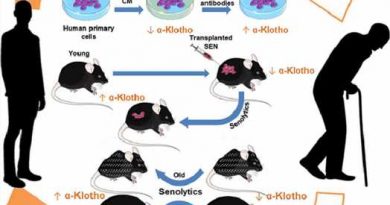Meth use drives overdose epidemic in rural US communities

Methamphetamine remains a stubbornly prevalent illicit substance in large swaths of rural America, according to a new study by Oregon Health & Science University researchers.
The findings, published today in JAMA Network Open, show that methamphetamine remains a common drug, and is driving overdoses in rural communities. About four of five people who use drugs in rural areas across 10 states reported using methamphetamines in the past 30 days, according to the study.
“That’s a huge problem that’s often overlooked,” said the study’s lead author from OHSU.
“Among people who use drugs in rural communities, methamphetamine use is pervasive,” said Todd Korthuis, M.D., M.P.H., professor of medicine (general internal medicine and geriatrics) in the OHSU School of Medicine and head of addiction medicine at OHSU. “This has been a West Coast problem for a long time, but now we see methamphetamine use in rural communities across the United States.”
The national opioid epidemic continues to dominate headlines, and accounts for the majority of the more than 100,000 drug overdose deaths recorded in the United States last year, largely due to fentanyl. However, Korthuis said it’s a mistake to overlook the impact of methamphetamine that continues to grip rural communities across the country. “Fentanyl now frequently contaminates methamphetamine,” Korthuis said. “People may think they’re using only using methamphetamine, when in reality, they’re unknowingly taking fentanyl—which is 50 to 100 times more potent than heroin.”
The new study confirmed that the risk of nonfatal overdose was greatest among people using both methamphetamine and opioids; 22% of people using both drugs reported experiencing an overdose in the past six months.
By comparison, 14% of rural people using opioids alone reported experiencing an overdose in the past six months. Among people using only methamphetamine, 6% reported nonfatal overdoses.
“Co-use of methamphetamine and opioids is associated with a big increased risk of overdose in rural communities,” Korthuis said. “Some people view rural areas as immune to problems like drug use and overdose, but they’re not.”
The study found a consistent presence of economic distress, including the fact that 53% of the respondents reported being homeless in the previous six months. The situation heightens the risk of so-called “deaths of despair”—drug overdose deaths, suicide and disease linked to drug and alcohol use.
“There are deaths of despair everywhere, but our rural communities have been hard hit,” Korthuis said.
Treatment for substance use disorders works, but remains scarce in rural America: 40% of all survey respondents reported trying to access treatment in the previous six months, but were unable to get it. Among those using both meth and opioids, 44% could not access treatment.
Additionally, naloxone can reverse fentanyl overdose, but is rarely given to people using methamphetamine. “Naloxone distribution should be expanded to people who use methamphetamine,” Korthuis said.
Source: Read Full Article



